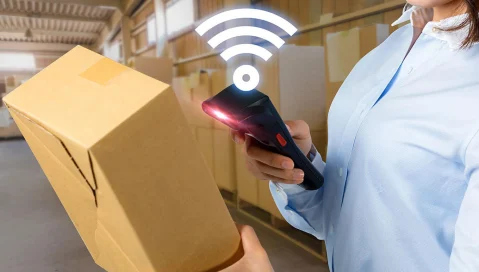How to Overcome Obstacles to IoT in the Warehouse
How to Overcome Obstacles to IoT in the Warehouse
How to Overcome Obstacles to IoT in the Warehouse
31 Oct 2018
Stephen "Stevie" Hay
While the Internet of Things is and will continue to have a massive impact on fulfillment (McKinsey & Co. pegs the impact of this technology at $11.1 trillion by 2025, which would be about 11 percent of the world’s economy), the costs and capabilities of IoT remain as questions.
This new wave of technology will fundamentally transform pick, pack, and ship processes, raising worries about employee privacy and data security. How can managers address those issues now? Here are three challenges businesses should be thinking about today:
Cost vs. Value: The Sensor Dilemma
Important fulfillment innovations, such as RFID tags and Bluetooth Low Energy (BLE) beacons, could simplify inventory management and help retailers avoid loss, but some warehouse managers still have concerns about cost. Retailers have tried to implement RFID for more than a decade, but supply chain professionals are still worried about the lopsided responsibility of implementation. Warehouses are often expected to cover the expenses related to tags, tagging equipment, and software without sales profit to offset the investment. Bluetooth beacons could offer a cheaper alternative. They have greater range and more speed than RFID tags, allow for real-time location tracking, and can monitor conditions such as light and temperature for sensitive goods. Beacons can also be used to automate access controls, leading to improved processes, increased safety, and theft prevention. While the cost of the devices is similar, almost any smartphone can act as a reader for beacons, leading to significant savings over RFID tags.
Simplifying Task – Or Enabling Micromanagement?
Warehouse wearables are a magnet of controversy, as evidenced by Amazon’s patent. Advocates often cite benefits including location tracking to guide employees to the correct stock-keeping unit (SKU) and movement monitoring that can help combat repetitive stress. Wearables also allow workers to have both hands free to better focus on their tasks, potentially decreasing safety incidents. But they come with privacy issues, and employees don’t want to feel as if they’re under surveillance, especially if the information being collected can be used against them. Wearables are still in the development phase, but they could become everyday tech if Amazon successfully implements them – and if other major companies can convince employees to buy in.
Addressing Vulnerabilities Today – Not Tomorrow
IoT experts are making progress toward fixing device vulnerabilities, with Gartner estimating that IoT security spending will reach $3.1 billion by 2021. But the more connected the tech, the more avenues for hackers. Since regulations and compliance are still in the early stages of development, IT shoulders the responsibility of determining whether the warehouse’s security measures are strong enough. It only takes one weak link to enable a cyber-nightmare.
If widespread adoption is the goal, developers must be sure to share the steps they’re taking to address those concerns and clearly identify the costs and benefits of these new devices. Getting warehouse leaders and workers excited about IoT and confident in its abilities will help drive innovation and value.
For more insights into the issues surrounding adoption of IoT in the warehouse, read Stevie Hay’s full article in RFID Journal.
¿Todo listo para transformar tu negocio?
Tenemos las soluciones ERP especializadas que necesitas para superar los desafíos de tu sector.



